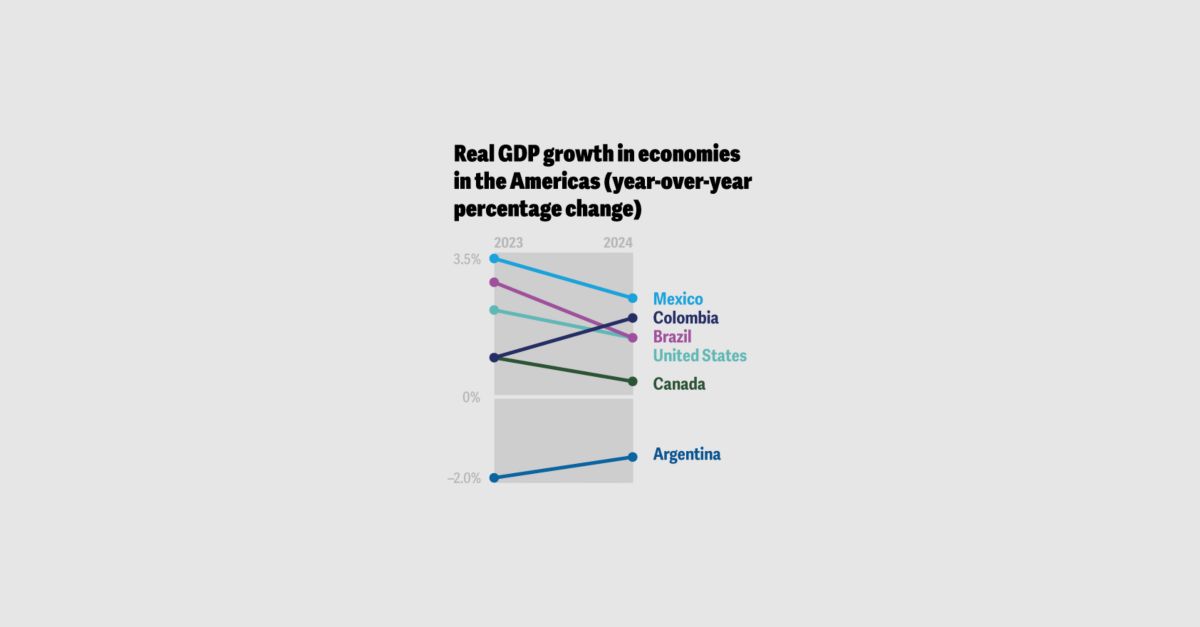
Economic growth is a complex phenomenon influenced by a multitude of factors across various domains, including geopolitical stability, monetary policy, inflation, government initiatives, labor markets, and trade practices. This report synthesizes insights from various sources to highlight the key factors that drive or inhibit economic growth globally as of 2024.
Geopolitical Stability and Risks
Geopolitical tensions significantly shape economic prospects. A key concern for global and domestic growth is the ongoing geopolitical instability, which remains the top perceived risk among executives surveyed by McKinsey. This instability is not only seen as a short-term challenge but also as a major long-term concern, particularly in how it may affect supply chains and economic strategies around the globe. The risk of political transitions in many countries, especially in a year filled with national elections, adds another layer of uncertainty as it could impact governance and economic reforms[2].
Monetary Policy and Interest Rates
Monetary policy plays a critical role in shaping economic landscapes. As central banks navigate high inflation, there is an expectation that interest rates will remain elevated. In such an environment, borrowing costs rise, impacting both consumer spending and business investment. For instance, the OECD indicates that higher-for-longer interest rates will slow consumer spending, vital for sustaining economic growth. Consequently, businesses will face tighter financial conditions affecting their investment strategies, thus constraining growth opportunities[3][6].
Additionally, as noted by Deloitte, while central banks may be poised to loosen monetary policy gradually as inflation stabilizes, doing so too quickly could jeopardize inflation targets and fiscal sustainability[4].
Inflation Trends
Inflation continues to be a pivotal factor influencing economic dynamics. The global economy has characterized a trend of moderating inflation, with projections from both OECD and Euromonitor suggesting that inflation is expected to return to target in most countries by the end of 2025, provided that economic activity aligns with these targets[3][5]. However, high inflation negatively impacts household spending power and business confidence, compelling consumers to prioritize essential spending over discretionary purchases[5].
Labor Market Conditions
The labor market's health is intrinsic to economic growth. Persisting tight labor markets across advanced economies indicate a resilience that bodes well for employment, although it also raises concerns for businesses struggling to fill vacancies. According to the McKinsey survey, concerns over job growth and workforce expansion are becoming more prevalent as economic conditions stabilize[2]. As labor shortages continue, businesses are expected to focus more on retaining talent and enhancing productivity, which are critical for sustaining growth amid uncertainty[6].
Trade and Supply Chain Dynamics
International trade remains a driving force for economic performance, albeit challenged by changing geopolitical dynamics and trade policies. Companies adopting strategies like nearshoring are rethinking their operations to minimize risks associated with foreign dependencies. This transition offers new growth opportunities in reshoring manufacturing operations, particularly in developed economies[5].
Furthermore, the uncertainty in global trade, accentuated by potential changes in trade policies, has made businesses increasingly cautious, affecting their growth outlook[4][5]. The shared perception among executives is that the intricacies of international trade will continue to pose both challenges and opportunities across various sectors.
Government Policy and Fiscal Responsibility
Government initiatives and policy frameworks play a pivotal role in shaping the economic landscape. A multidimensional framework to assess economic growth quality highlights the importance of innovativeness, inclusiveness, sustainability, and resilience as factors characterizing a nation's growth trajectory[1]. Fiscal policies aimed at reducing deficits while encouraging sustainable growth will be critical in managing public debt and ensuring economic stability.
As the global economy gradually shifts toward post-pandemic recovery, countries will need to implement robust fiscal reforms to enhance competitiveness and address challenges such as public debt. Each country’s ability to sustain economic growth through effective policy measures, including investments in infrastructure and technology, will be crucial as they navigate a complex global economic environment[3][4].
Conclusion
In conclusion, the current economic landscape reveals a fragile equilibrium influenced by geopolitical risks, monetary policies, inflationary pressures, labor market conditions, trade dynamics, and government policy frameworks. As we move through 2024, the interplay of these factors will critically determine the trajectory of global economic growth. Countries that effectively harness their resources while mitigating risks associated with these challenges stand to gain a competitive edge in an increasingly interconnected world.
Get more accurate answers with Super Pandi, upload files, personalized discovery feed, save searches and contribute to the PandiPedia.
Let's look at alternatives:
- Modify the query.
- Start a new thread.
- Remove sources (if manually added).